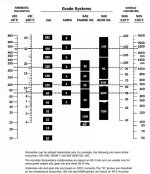OP
PutnamVictor
Bronze Member
- Joined
- Dec 26, 2009
- Messages
- 52
I have taught fire service hydraulics for over 40 years so I will throw in my 2 cents.
You say that the pump states a continuous vacuum of 4". Is this the parameter of the test that determined the flow and PSI rating? If you saw 0 inches of mercury vacuum, would you be able to deliver greater than the stated pressure and volume? Is 4" the maximum negative pressure the pump will develop?
You are on the correct path by determining the viscosity as it relates to the friction loss of the suction side plumbing. Remember to add "loss" for a suction strainer, any supply piping and any elbows in the plumbing. Rule of thumb is slow the flow rate (GPM or fluid velocity) and you reduce those parasitic losses which is probably common sense to you.
The 4" of mercury was from the technical specification on the manufactures site.
"Inlet Vacuum Maximum Continuous Inches Mercury 4"


